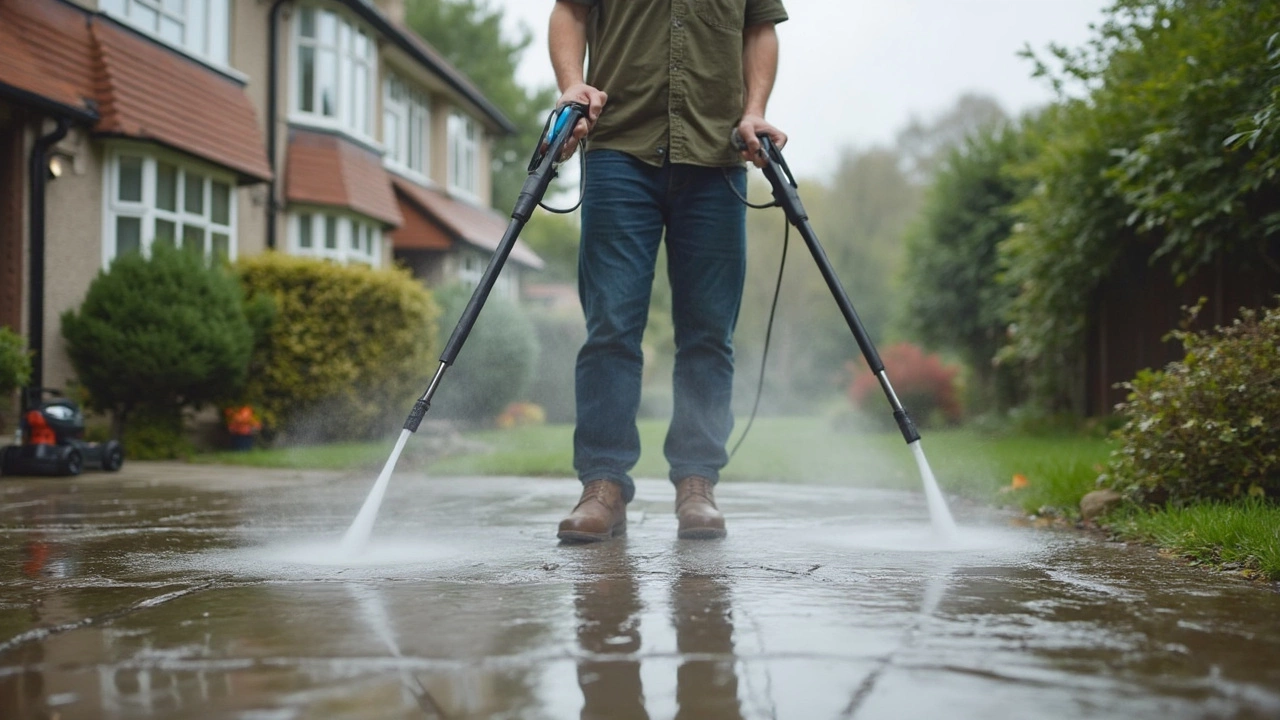PSI for Driveway Cleaning – What You Need to Know
When you’re about to pressure wash a driveway, the first thing you’ll hear is "PSI." That’s how hard the water is being pushed out. Too low and dirt stays stuck; too high and you could scorch the concrete or damage the sealant. Below we break down the sweet spot and give you easy steps to get a pristine driveway without a fuss.
How Much PSI is Enough?
For most residential driveways, 1500‑2000 PSI is the sweet spot. This level blasts away oil stains, moss, and grime while keeping the surface intact. If your driveway is made of dense concrete or has a tough sealant, you can push it up to 2500 PSI, but stay careful about the nozzle you use – a wider fan tip (25‑40°) spreads the force and protects the surface.
If you have a light‑weight paver or a decorative stone driveway, drop the pressure to 1200‑1500 PSI. Anything higher risks cracking or chipping the material. When in doubt, start low, test a small area, and increase gently until the dirt lifts.
Choosing the Right Nozzle and Water Flow
The nozzle angle matters as much as PSI. A 0° nozzle concentrates a laser‑like stream – great for stubborn oil spots, but it can etch the surface if you hold it too close. Use it sparingly, and keep the wand at least 12‑18 inches away. For overall cleaning, a 25° or 40° fan tip spreads the water, reduces pressure, and speeds up the job.
Water flow, measured in gallons per minute (GPM), works with PSI to define cleaning power. A washer that offers 2‑3 GPM at 1500 PSI will clean faster than a low‑flow model. For a typical driveway, aim for at least 2 GPM; that gives you enough water to rinse away lifted dirt without needing multiple passes.
Before you start, clear the driveway of loose debris, sweep away leaves, and pre‑wet the area. Apply a driveway‑friendly detergent if you have stubborn stains – let it sit 5‑10 minutes, then spray with the chosen PSI setting. Work in sections, overlapping each pass by about 10% to avoid streaks.
After the detergent works its magic, switch to plain water and rinse from the highest point down. This helps the runoff carry away grime instead of pushing it back onto cleaned spots. Watch for puddles; if water pools, lower the pressure slightly to improve drainage.
When you’re done, let the surface dry for a few hours before walking on it. If you notice any faint marks, a second light pass at a lower PSI (around 1200) will usually erase them without harming the surface.
Finally, protect your driveway by resealing it every 1‑2 years. A fresh sealant adds a barrier against oil, rust, and weather, meaning you’ll need less pressure next time you wash.
In short, 1500‑2000 PSI with a 25°‑40° nozzle and 2‑3 GPM gives most driveways a clean look without damage. Start low, test, and adjust as needed – and you’ll enjoy a spotless driveway without the headache.

How Much PSI Do I Need for a Driveway? Pressure Washing Made Simple
Wondering what PSI you should use to pressure wash your driveway without damage? This article breaks down the best pressure settings, what happens if you go too high or too low, and how to choose the right tip for your washer. See the real-life differences between gas and electric pressure washers. Get practical tips on tricky spots, oil stains, and when it’s time to call in a pro. This is everything you need to know before firing up your pressure washer on concrete.
Read More